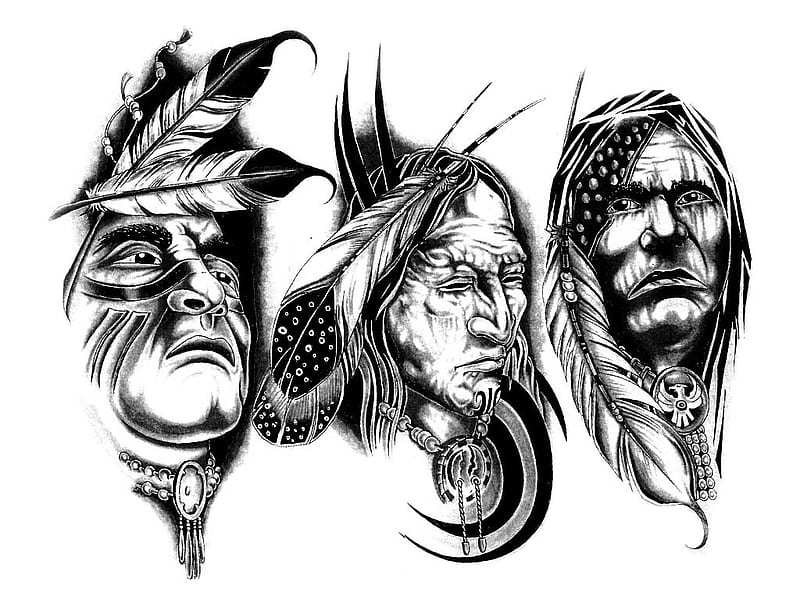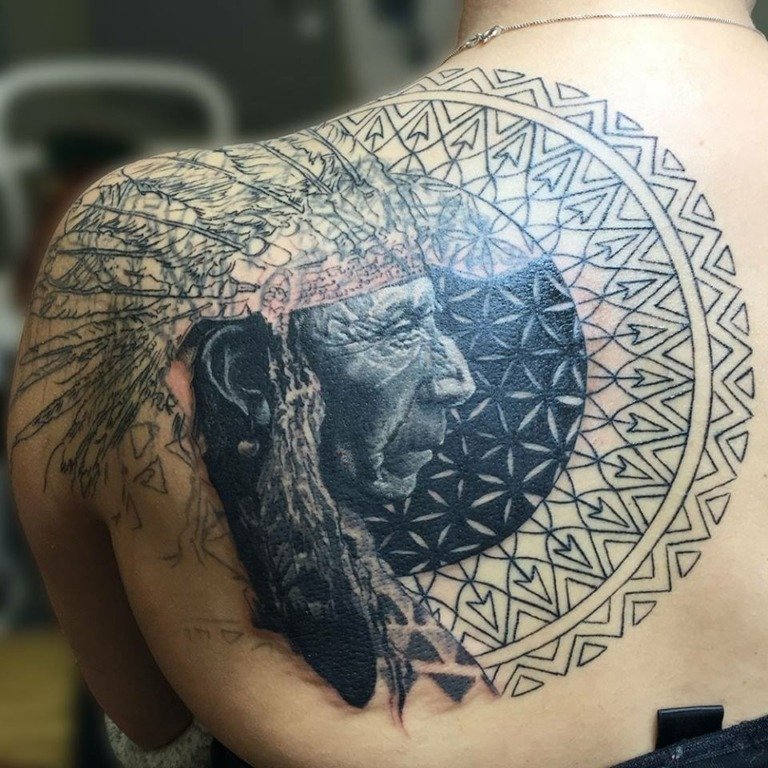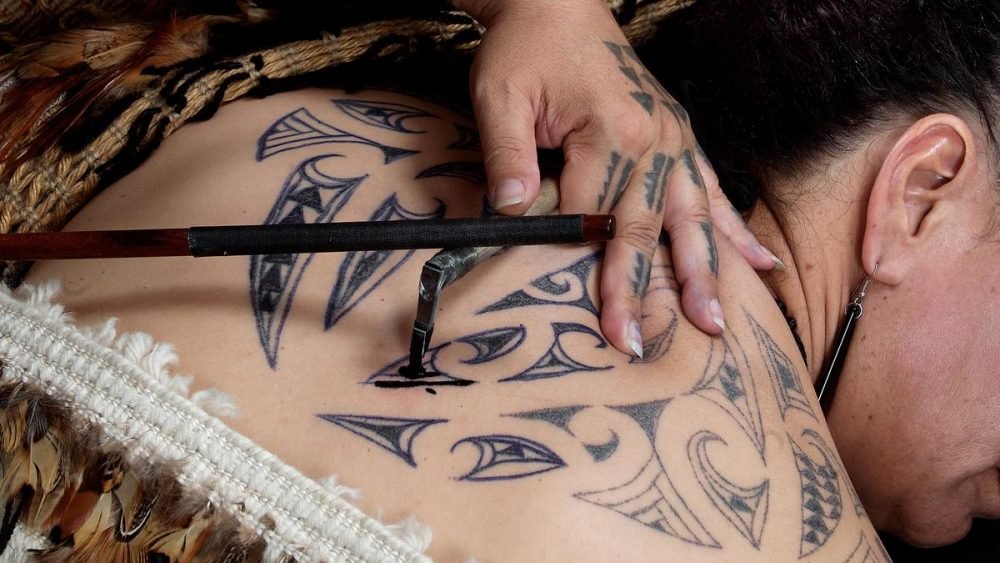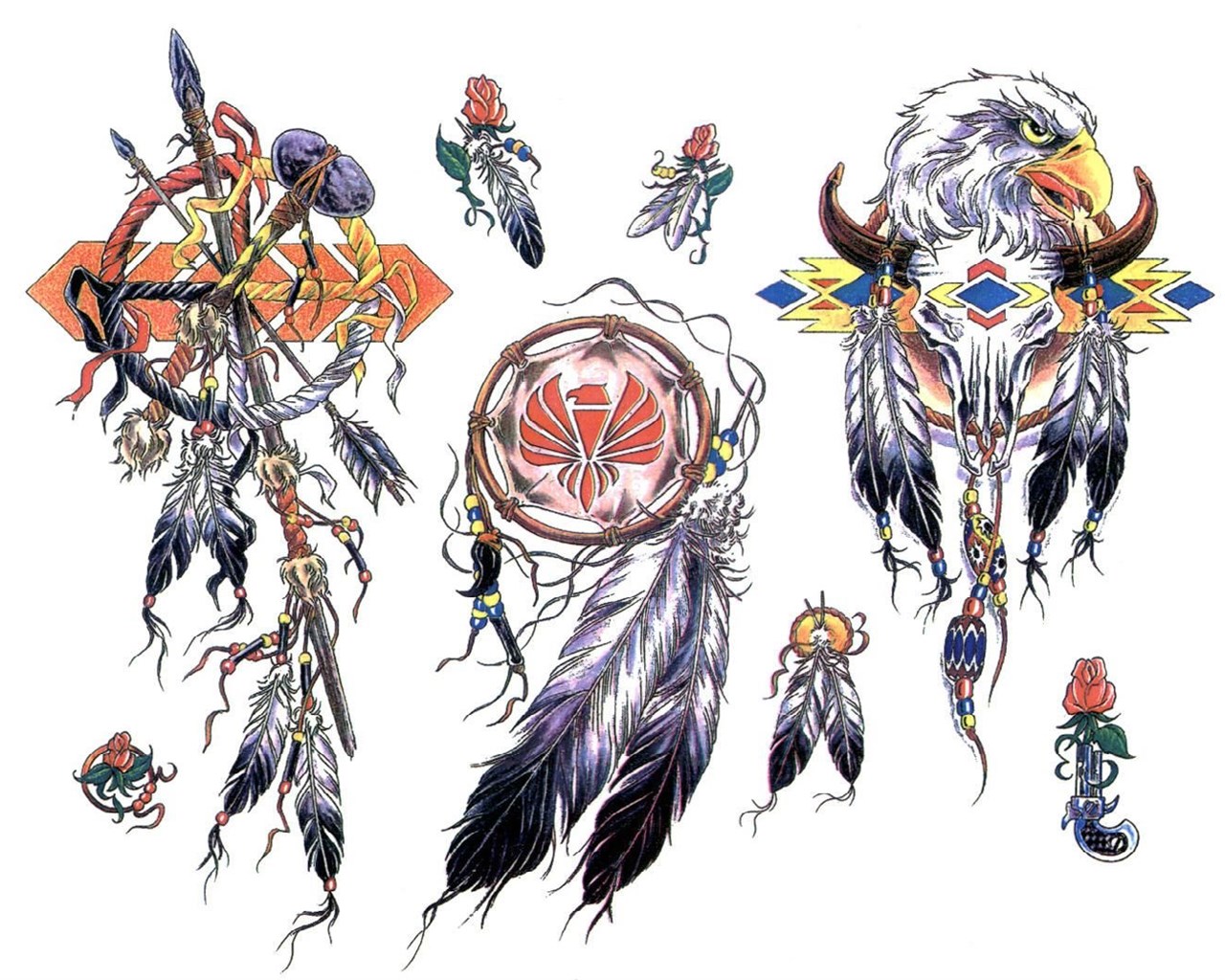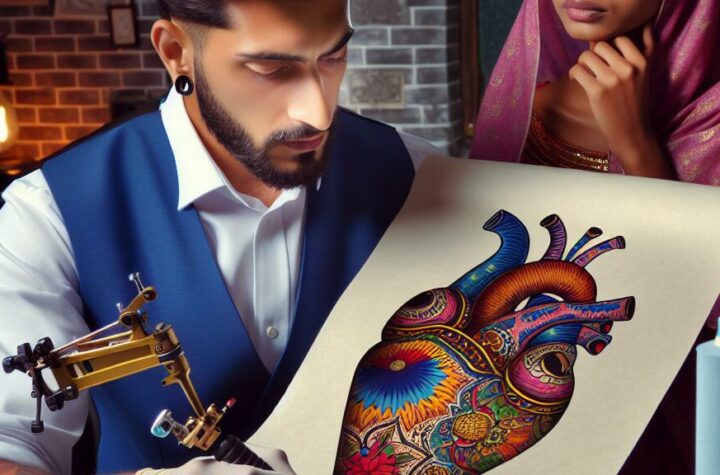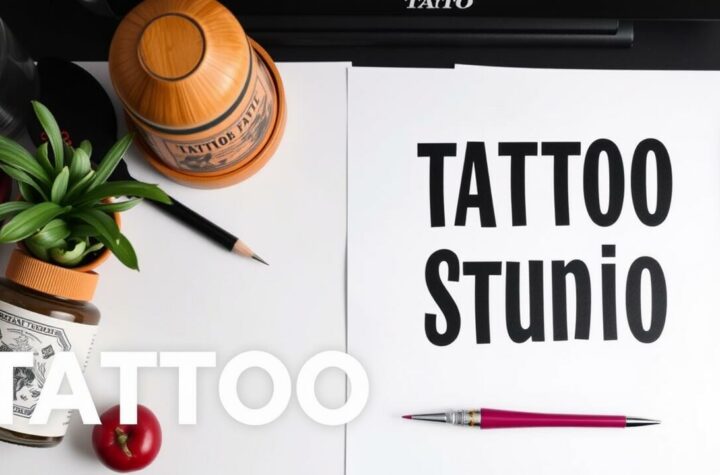History and Significance of Native American Tattoos
Native American tattoos possess an intricate and enigmatic history, harboring immense cultural significance within Native American tribes. These indelible markings transcend the realm of mere body art; they embody profound meanings and encapsulate the essence of both wearer and tribe, forging a tangible connection to their identity.
The symbols employed in these tribal tattoo designs exhibit a captivating diversity, contingent upon the specific tribe and geographical region. Frequently featuring animals like majestic eagles, formidable wolves, or noble bears alongside revered totems, these motifs hold deep-rooted connotations for each respective tribe. Each symbol radiates strength, courage, protection – even serving as spiritual guides through life’s labyrinthine journey. Consequently, an eagle tattoo becomes a poignant emblem of liberty and might while a bear tattoo epitomizes wisdom fortified by unwavering valor.
Intricate designs birthed from ancestral techniques and tools abound in Native American society thanks to skilled artisans adept at their craft. The meticulous process entails melding natural pigments derived from flora or minerals with animal fat or water to produce ink brimming with vibrancy. Employing bone needles honed to perfection affixed onto wooden handles as their instruments of creation, these masterful tattoo artists repeatedly puncture the skin until their vision emerges resplendently on flesh’s canvas.
Tattoos occupy an indispensable role in shaping Native American society whilst defining individuality within this rich tapestry of culture. Functioning as visual insignias signifying membership within specific tribes or clans while simultaneously conveying vital information regarding one’s standing within the community hierarchy; tattoos stand testament to rites of passage celebrated during sacred ceremonies like puberty rituals or warrior initiations. Symbolic markers indicative of maturation into adulthood are bestowed upon young individuals receiving their inaugural tattoos—an enduring emblem heralding acceptance into this sacred sphere governed by tradition and unity.
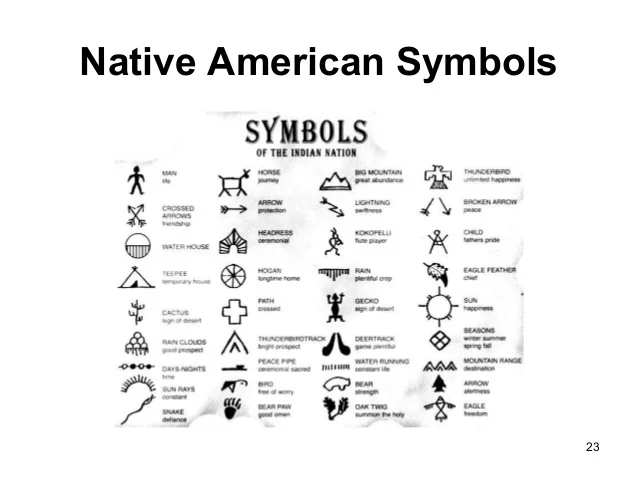
Cultural Importance of Tattooing in Native American Tribes
Native American tribes have always held tattoos in high regard, an integral part of their cultural fabric. These intricate designs were not mere embellishments; they possessed profound symbolism and meaning for those who adorned their bodies with them. In fact, these tattoos were believed to provide protection against malicious spirits, lending an air of mystique and intrigue.
The origins of Native American tattoos can be traced back through the annals of time, spanning countless centuries. Each tribe boasted its own distinctive tattoo style and tradition that set it apart from others. Animal motifs were frequently utilized by many tribes to symbolize virtues such as fortitude, valor, or sagacity. These tribal patterns seamlessly intertwined elements from the natural world – feathers and flora – establishing a harmonious connection between individuals and their surroundings.
Within Native American society, tattoos played a pivotal role in shaping personal identity and facilitating self-expression. They acted as badges of tribal affiliation, serving as visible markers denoting social standing within the community at large. Moreover, adorning oneself with a tattoo was considered an essential rite of passage for both men and women alike; it epitomized the transition into adulthood while signifying readiness to shoulder adult responsibilities.
During traditional Native American tattooing practices, black ink reigned supreme due to its symbolic association with potency and spirituality. The process itself involved employing age-old tools like bone needles or cactus spines dipped delicately into ink derived from natural pigments expertly blended with water or oil.
In essence, one cannot underestimate the cultural significance engrained within the artistry of tattooing among Native American tribes. It encompassed far more than just personal expression; rather it served as a conduit connecting individuals to their ancestral heritage while simultaneously honoring spiritual beliefs deeply rooted in tradition. Even today, many Native Americans proudly embrace this ancient form of body artistry by merging contemporary interpretations seamlessly into their visions for future tattoos – a testament to the timeless power wielded by these mesmerizing designs.
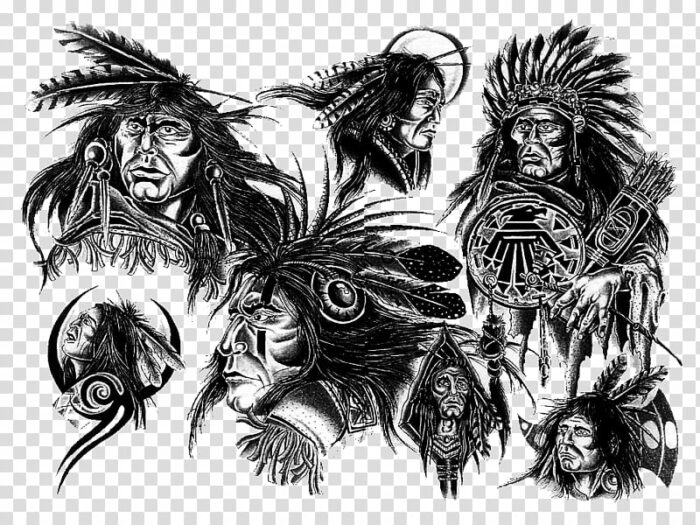
Symbols and Meanings Behind Native American Tattoo Designs
The enigmatic world of Native American tattoo designs unveils a tapestry of perplexing symbols and meanings, woven intricately within the rich cultural heritage of these indigenous people. Across the vast expanse of North America, myriad tribes sought to etch their identities upon their bodies, adorning themselves with tattoos that transcended mere aesthetics. These indelible marks resonated with profound significance, finding placement on faces, arms, chests – even shoulder blades – each bearing witness to a distinct purpose within diverse tribal traditions.
Within the realm of native American tattoo designs, a plethora of symbols emerged from the depths of tribal consciousness. Each emblem held its own enigmatic meaning and conveyed an inherent importance. Some tribes employed tattoos as distinctive markers to demarcate their group from others or commemorate accomplishments and triumphs. Others harnessed these intricate motifs to embody spiritual beliefs or immortalize ancestral narratives passed down through generations.
Amongst the pantheon of iconic native American tattoo designs stands one that has permeated popular culture: the dreamcatcher. Originating from Ojibwe culture but embraced by numerous tribes over time, this captivatingly complex creation serves as a talisman against malevolent dreams and negative energies while allowing benevolent reveries to traverse its intertwined webbing unscathed. The allure and potency imbued in this design have rendered it an increasingly favored choice for those seeking native American tattoos.
Intriguingly enough, native Americans also assimilated elements from divergent cultures into their inked artistry. Celtic tribal tattoos found themselves seamlessly integrated into certain designs by select tribes as homage paid to European settlers or solidarity shown towards Irish immigrants who endured parallel discrimination alongside them.
Throughout history, tattoos wielded immense power amongst native american communities; they served not only as vessels for personal expression but also as bearers of cultural significance. By visually encapsulating individual stories and collective histories specific to various tribes across North America, these permanent imprints played an indispensable role in the preservation of traditions and identities within indigenous communities.
Traditional Techniques and Tools Used in Native American Tattooing
The perplexing and bursty realm of Native American tattooing unveils a captivating history, intricately woven into the very fabric of numerous tribes’ cultures. The enigmatic techniques and tools employed in this ancient art form leave one spellbound.
In the genesis of their inked odyssey, Native Americans would fashion needles from sharpened bones or other organic matter. These rudimentary implements would then be immersed in soot or natural dyes sourced from plant extracts, as if harnessing nature’s own essence to breathe life into their tattoos. Each stroke held profound symbolism, resonating with individuals and entire tribes alike.
A prevalent custom among Native American communities involved etching indelible imprints upon one’s thighs during adolescence or adulthood—a ritualistic rite of passage marking pivotal milestones along life’s labyrinthine path. Such ceremonial adornment transcended mere embellishment; it was a hallowed communion that forged an unbreakable bond between individuals, their ancestral lineage, and the tribal heritage pulsating within their veins.
The symphony of designs and patterns adorning these sacred canvases is as diverse as the multitude of tribes themselves—each unique brushstroke crafted by individual predilections melded harmoniously with cultural tapestries. Some symbols epitomize personal triumphs while others serve as regal insignias denoting social standing or familial roots. Beyond being visually enthralling masterpieces, these tattoos are believed to summon auspicious blessings and safeguard against malevolent forces.
Inescapably entangled within indigenous societies, native American style tattoos resonate with resounding cultural significance—a vivid testament to identity forever etched upon flesh—an ethereal bridge uniting past narratives with present-day realities—granting solace through a sense of belonging amidst the ebb and flow of contemporary existence.
Role of Tattoos in Native American Society and Identity
Tattoos have forever held a perplexing role in the fabric of Native American society and identity. The enigmatic nature of traditional Native American tattoos varies extensively among disparate tribes, each possessing their own distinctive designs and symbols that burst with profound cultural significance. These awe-inspiring tattoos serve as tangible representations of an individual’s unbreakable connection to their tribe or clan, acting as vivid symbols encapsulating their familial heritage.
The cryptic meanings shrouded within these age-old tattoos are meticulously handed down through generations, ensuring that the sacred symbolism remains untarnished. When one receives a fresh tattoo, it is not merely an arbitrary personal choice but rather an eloquent continuation of a time-honored tradition deeply ingrained within their tribal lineage. The captivating emblems utilized in these inked creations can convey diverse messages brimming with valor or fortitude.
Furthermore, beyond serving as markers for personal identity, these indelible markings wielded unparalleled power during times of conflict and strife. Warriors would artfully adorn themselves with intricate patterns and enigmatic symbols to harness the potent force of intimidation, effectively alerting members from rival tribes that they were about to confront an adversary who was truly formidable. These intimidating insignias would grace various parts of the body or even sprawl across its entirety like a breathtaking tapestry.
Yet, the remarkable role played by tattoos in Native American society transcends mere embellishment; they emerge as commanding emblems forging unwavering connections between individuals and their ancestral roots while simultaneously functioning as visual beacons for others to recognize and honor. Through this ancient artistic expression etched onto flesh, Native Americans continue to safeguard their invaluable cultural heritage while fostering enduring bonds within their vibrant communities.
What is the perplexing and bursty history and significance of Native American tattoos?
The enigmatic tapestry of Native American tattoos weaves a bewildering tale that transcends time. Embodied with mysterious meanings, these inked impressions have traversed centuries, serving as an enigmatic expression of personal and cultural narratives. An ethereal shield, they interlace protection with spiritual communion.
Why does tattooing pulsate with cultural importance within the intricate fabric of Native American tribes?
Tattooing pulsates vibrantly within the core essence of Native American tribes, resonating profoundly as a luminous emblem of identity, tribal kinship, and individual triumphs. It serves as an ancestral homage etched in skin, preserving hallowed traditions while illuminating one’s profound connection to their sacred community.
What cryptic symbols lie hidden within the mesmerizing designs adorning Native American tattoos?
Within each mesmerizing stroke lies an array of cryptic symbols entwined intricately through Native American tattoo designs. A soaring eagle embodies both indomitable strength and celestial spirituality; whereas a formidable bear encapsulates valorous courage and unwavering guardianship. These symbolic manifestations mirror treasured values, age-old beliefs, and timeless legends embraced by each unique tribe.
How were these mystical imprints traditionally etched upon flesh using archaic techniques and tools entrenched in Native American culture?
Immersed in native customs lay archaic techniques that bestowed these mystifying imprints upon human canvas. Natural elements such as bone, wood or cactus spines served as primordial implements for this transformative artistry. Pigments derived from earthly origins – be it botanical wonders or mineral treasures – formed sinuous ink trails upon flesh’s tapestry. The process itself demanded gentle taps or cautious pricks to transmute pigmentation onto the corporeal realm.
In what profound ways do tattoos shape the intricate tapestry of Native American society and identity?
Within the dynamic fabric of Native American society, tattoos stand as pillars of profound significance. They dance upon flesh’s canvas, visually espousing tribal affiliation, personal journeys, and cultural heritage. As a source of unabashed pride and unyielding unity, these inked narratives serve as conduits to transmit age-old traditions and timeless tales to future generations in an endless cycle of cultural awakening.

